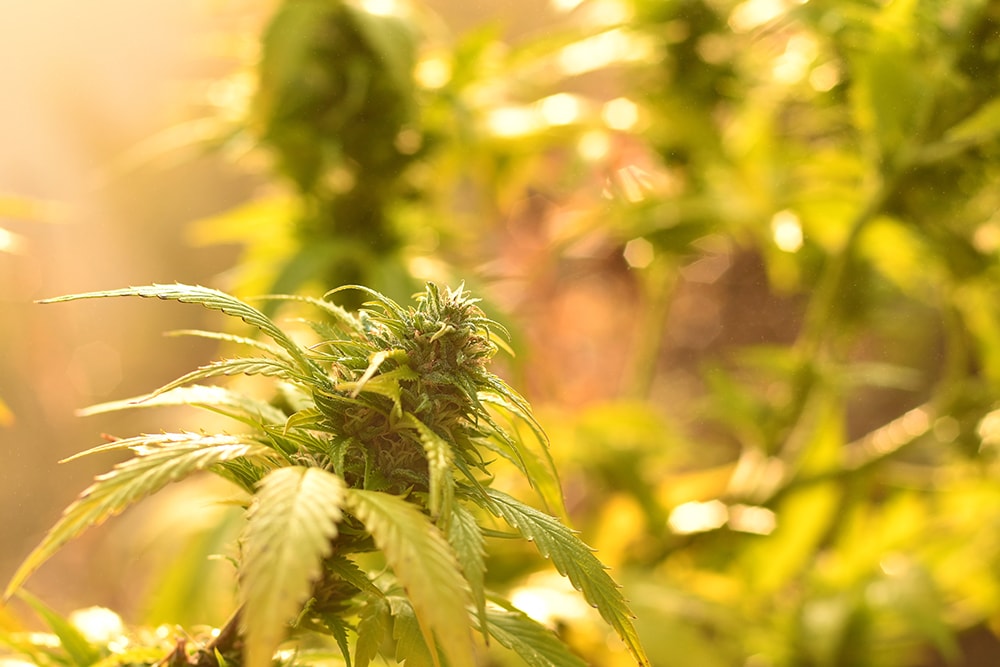
When purchasing cannabis at a shop or browsing the strains online, you will come across two distinct groups: sativa and indica. Whether you are a regular consumer or the occasional smoker, you may have used either of the cannabis varieties as a touchstone to predict some effects.
For instance, some consumers believe that indica strains are physically sedating. This makes them ideal for relaxing on Netflix, while some use it as a nightcap minutes before bed. Sativa, on the other hand, tends to offer more uplifting cerebral effects. So it goes well with creative projects, social gatherings, and physical activity.
The common belief that the two strains deliver distinct effects to users is deeply rooted in Florida’s mainstream cannabis culture. Almost every budtender will begin their recommendations by asking which strain you prefer.
But according to researchers, the categories are not as prescriptive. This means that there isn’t much evidence to suggest that they exhibit consistent chemical profile patterns that could bring the sedating and uplifting effects. Well, you may have already known that the strains differ in growth and appearance, but only cannabis cultivators will find this distinction useful.
Indica vs. Sativa: Origin and history of the terms
The two terms came into existence in the 18th century to differentiate the two species: Cannabis indica and Cannabis sativa. Carl Linnaeus named hemp plants in west Eurasia and Europe ‘sativa.’ Here, it was cultivated for its seeds and fiber.
Indica, on the other hand, got its name from Jean-Baptiste Lamarck. The term describes the psychoactive strains of India. Here, it was useful for its fiber and seeds and was a key component in hashish production.
Since the early botanical definitions, the terms have shifted. Currently, sativa refers to any narrow-leaf cannabis variety which induces energizing effects. The narrow-leaf drug (NLD), however, used to be Cannabis indica ssp. indica originally. Indica refers to stout, broad-leafed varieties known to offer sedating effects. Technically, the BLD (broad-leaf drug) strains are Cannabis indica ssp. afghanica. Hemp, on the other hand, refers to non-intoxicating industrial varieties primarily harvested for seeds CBD, and fiber. Originally, it was named Cannabis sativa.
Being an informed consumer, you should know the practical value of these strains.
Indica vs Sativa: What are their effects
The three type procedure of predicting the effects of cannabis is no doubt convenient in the vast world of cannabis. But with so many products and strains, where should you begin your search? The answer lies in two words that you should have in your back pocket: cannabinoids and terpenes.
Well, individual plants deliver varying effects even if they are in the same category. It all depends on the growing technique used and the chemical composition of the plant. What distinguishes the strains is their terpene and cannabinoid content. The two compounds determine the overall effects of a particular strain.
Cannabinoids
These naturally occurring chemical compounds exist in cannabis plants in dozens. They are responsible for delivering the numerous effects of cannabis consumption-both positive and negative. The respective functions of all the cannabinoids have not been exhausted. But researchers have identified two key components:
- THC – This is the main psychoactive cannabis compound that leads to ‘high’ state. Consumers who seek euphoric experiences prefer THC dominant strains. They are also ideal for patients seeking to treat depression, pain, insomnia, anxiety, and much more. If you dislike the side effects of THC, then you can go for strains with a higher CBD ratio.
- CBD – This one is non-psychoactive. However, it offers a range of physical benefits such as reduced nausea and pain, easing migraines, and help with other medical ailments. Therefore, it best for patients who need clear-headed symptom relief or those who are highly sensitive to the psychoactive component.
Terpenes
People pay more attention to CBD and THC levels in strains, but research indicates that terpenes may also have significant impacts. The naturally occurring compounds directly affect the smell of the plant and influence the effects of specific strains.
Some common terpenes include Bisablolol, Caryophyllene, Linalool, and Myrcene.
Sativa in-depth
This cannabis variety primarily grows in hot and dry climates regions that experience long sunny days. This includes sections of Central America, south-eastern and Western portions of Asia, and parts of Africa. These plants are thin, tall, with finger-like leaves and can grow beyond 12 feet high. Compared to other varieties, sativa takes longer to mature. It also has a higher THC to CBD ratio.
The variety is known to offer a ‘mind high’ that is both energizing and anxiety-reducing. Using sativa-dominant varieties may leave you feeling creative and productive, as opposed to lethargic and relaxed. Due to this stimulating impact, you can use it during the day. The popular strains include Panama Red, Acapulco Gold, and Durban Poison.
Indica in-depth
The indica variety has its origins in Pakistan, Turkey, Afghanistan, and India. They are unique for their adaptation to the dry, turbulent, and harsh climate that characterizes the Hindu Kush mountains. The indica plant is stocky and short, with chunky leaves and bushy greenery growing wide and broad. These plants grow faster than their counterparts, with each plant producing more buds.
Usually, the strains have a higher CBD to THC ratio and are ideal if you want a relaxation mood. It may also relieve pain, increase appetite, and reduce nausea. Due to its deep relaxing effect, you better consume it at night.
The most popular strains include Afghan Kush, Granddaddy Purple, and the Hindu Kush.
Hybrids
Every year, cannabis farmers come up with unique combinations from different strains of parent plants. The hybrids are often created to target specific benefits or effects. Usually, they are grown in greenhouses and farms from a combination of indica and sativa. Their appearance depends on the specific combinations, and their CBD to THC ratios are unique.
The numerous unique impacts range from lowering stress and anxiety levels to easing discomforts of radiation and chemotherapy.
How to choose the right product
Here are the consideration factors when choosing the right strain:
- Narrow your options by knowing what you want to achieve. You can consult with specialists to know the best variety for your condition.
- Cannabis may be natural, but it could have intense effects. Therefore, you need to pay attention to your medical history and consider any possible interactions with medications or existing medical conditions.
- Understand your tolerance to know the best strain, whether you are a first-time user or habitual.
- Choose the desired method of consumption by considering the pros and cons of each technique.
Bottom line
You can always discuss with your healthcare provider on how you can benefit from cannabis. This way, you will weigh between the potential effects on your health to come up with something that matches your needs.
Green Relief is the top medical marijuana doctor in Florida with a reputation of helping patients from different backgrounds find solutions. Contact us today if you need apt guidance on how you can benefit from this natural remedy.

